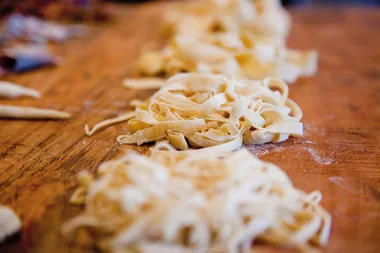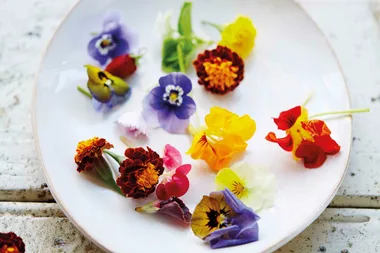The simple pleasure of cooking with your own garden produce is hard to beat, but if you’re not ready for a full-blown vegie patch a herb garden is a great place to start. Even a small patch is a pleasure to cultivate and if you are space-challenged and garden herbs and a few salad greens make a great place to start. “Nothing compares to the freshness and taste of homegrown herbs, and because you only pick what you need, there’s no waste,” says Sharron Pfueller of Sustainable Gardening Australia.

“It thrives in a sunny, warm, sheltered position in well-drained soil with good air circulation.”
How to grow herbs to cook with
The right location is key when plotting your patch. “You want it to be easily accessible, so just outside the back door is ideal, yet it also needs to be suitably sunny,” explains Sophie Thomson of Sophie’s Patch. The Australian climate lends itself to herb gardens that contain Mediterranean herbs with small, tough, grey-green leaves, such as sage and oregano, need at least six hours of direct sun and can tolerate drought, says Justin Nigh of Regenerative Designs Australia. “Herbs with large, more delicate leaves – such as mint, parsley and coriander – prefer moist soil in partial shade with at least three to six hours of direct sun,” he explains. Well-drained, nutrient-rich soil is a must as most herbs don’t like wet feet. If you’re just starting out, sun-loving Mediterranean herbs are among the best plant-and-leave varieties: rosemary is incredibly hardy and virtually looks after itself; oregano is a robust perennial suitable for groundcover or in a pot, and will benefit from a layer of mulch to help prevent it from drying out; and thyme enjoys similar growing conditions.
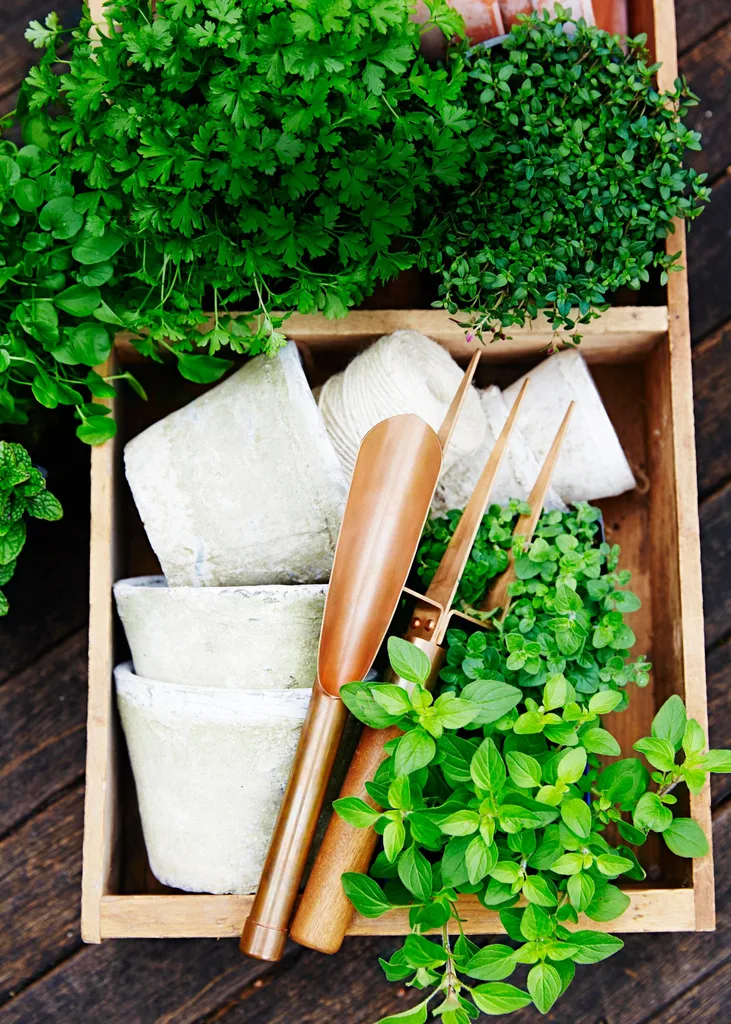
Choosing herb garden plants
When choosing which garden herb to plant, think beyond the herb patch and incorporate fragrant, floral varieties throughout your garden. “Lavender’s distinct perfume, grey-green foliage and edible purple flowers make it a wonderfully versatile, drought-hardy option,” says Justin. For cooking, opt for the sweeter English variety and add fresh or dried lavender flowers to baked goods. Thai basil will also boost your garden’s sensory appeal with its sweet aroma and large, purple, bee-attracting blooms. To promote bushier plants, cut the tender new growth throughout the season and use it as garnish for Thai stir-fries and curries.
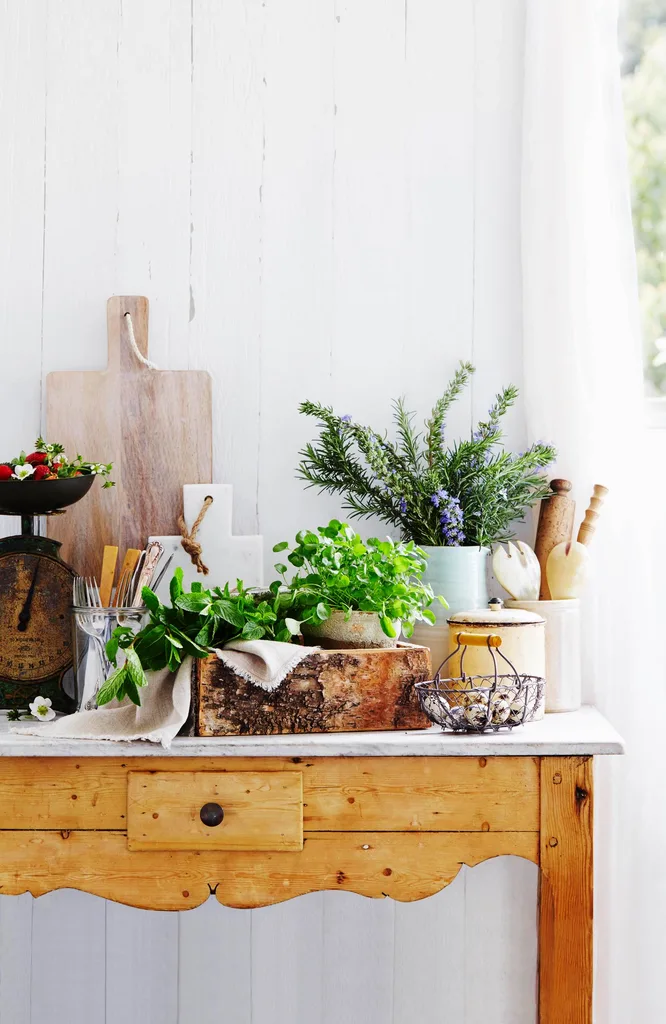
One of the best ways to plan your herb garden is to draw inspiration from what you love to cook and what you can grow well, advises Sophie Thomson. “If you’re a lover of Italian food, it’s hard to go past flat-leaf parsley and, of course, sweet basil, which should be planted in spring for summer and autumn harvesting,” she says. “For the aromatics and heat synonymous with Asian flavours, coriander is easy to grow in the cooler months, while chilli plants and lemongrass will add zing to dishes over summer.” For French flair opt for chives, which provide a delicate onion flavour and pretty edible flowers, and tarragon to season roasts and buttery sauces. Instead of buying separate pots, try a seedling mix to suit your preferred type of cooking. Floriana’s ‘Fusion’ Italian pack from Bunnings, offers oregano, basil and parsley.
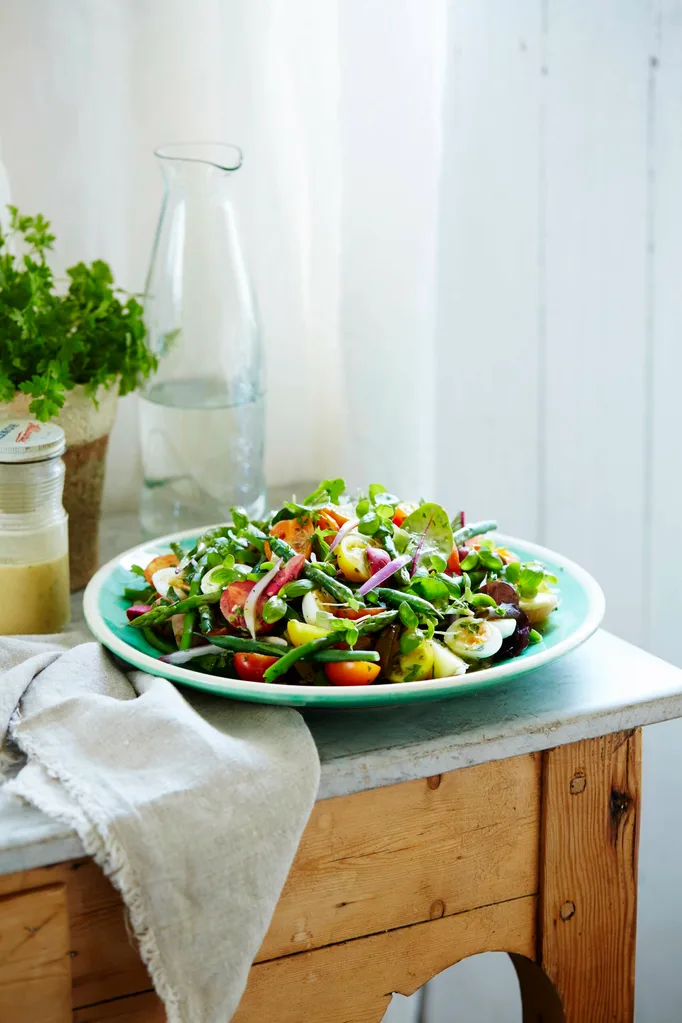
Can’t live without a green smoothie, or fresh summer salads? They’ll taste even more satisfying with your own produce. Rocket and spinach are easy to grow at any time of year, says Mat Pember of The Little Veggie Patch Co. “Your soil needs to be free-draining and moderately fertile with a good dose of compost or organic fertiliser,” he says. Rather than seedlings, which can be quite vulnerable, Sophie Thomson suggests getting a head-start by planting more robust mixed punnets of lettuce and small plants. “To prevent leaves tasting bitter, it’s important the plant doesn’t get stressed, so water regularly,” says Sophie. If your plants have a tendency to “bolt” – that is, start quickly sprouting flowers and running to seed – you need to tuck in. “Under-use is often the reason edible plants go to seed,” says Mat. “Harvesting leaves and sprigs is like a pruning service that promotes new growth, maintains flavour and keeps production rolling.” It’s not all bad news, however – allowing plants to go to seed can be beneficial, particularly with self-sowing varieties of lettuce and coriander, says Sophie. “You can be rewarded season after season, if you nurture the right growing conditions and let nature take its course,” she says.
 Derek Swalwell
Derek Swalwell

